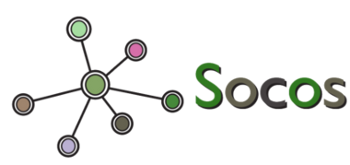Reseach lays the foundation of our techology and consulting services.
-
Ming & Ming (2012) Modeling student conceptual knowledge from unstructured data using a hierarchical generative model. NIPS2012 Workshop: Personalizing Education With Machine Learning. South Lake Tahoe, CA.
- Ming & Ming (2012) Predicting Student Outcomes from Unstructured Data. IARIA, Data Analytics.
- Carlson, Ming & DeWeese (2012) Sparse codes for speech predict spectrotemporal receptive fields in the inferior colliculus. PLoS CompBio
- Ming & Ming (2012) Predicting Student Outcomes from Unstructured Data. UMAP2012.
- Bumbacher & Ming (2012) Heirachical coding of natural signals in a dynamical system model. Cosyne2012
-
Bumbacher & Ming (2012) Pitch-sensitive components emerge from hierarchical sparse coding natural sounds. ICPRAM2012
-
Ming, N.C. & Baumer, E.P.S. (2011) Using text mining to characterize online discussion facilitation. Journal of Asynchronous Learning Networks, 15(2).
- Carlson, N., Ming, V.L. & DeWeese, M.R. (2010) A Sparse Representation of Speech Data. Sensory Coding & the Natural Environment, Gordon Research Conference.
-
Ming, V.L. & Holt (2009) Evidence of efficient coding in human speech perception. JASA 129, Num. 3: 1312-1321.
-
Ming, N.C. (2009). Analogies vs. contrasts: A comparison of their learning benefits. In B. Kokinov, D. Gentner, & K. Holyoak (Eds.), New frontiers in analogy research: Proceedings of the second international conference on analogy (pp. 338-347). Sofia, Bulgaria: New Bulgarian University.
-
Smith & Lewicki (2006) Efficient auditory coding. Nature 439, Num. 7079.
-
Chang, N.M. (2006). Learning to Discriminate and Generalize through Problem Comparisons. Unpublished doctoral dissertation, Carnegie Mellon University, Pittsburgh PA.
-
Smith & Lewicki (2005) Efficient coding of natural sounds using spikes predicts cochlear filters. Advances in Neural Information Processing Systems 17. MIT Press, Cambridge, Massachusetts.
-
Smith & Lewicki (2005) Efficient coding of time-relative structure in natural sounds using spikes. Neural Computation. Vol. 17, Num. 1.
- Bartlet, Braathen, Littlewort, Smith & Movellan (2003) An approach to automatic recognition of spontaneous facial actions. Advances in Neural Information Processing Systems 15. MIT Press, Cambridge, Massachusetts.
- Wang, Olshausen & Ming, V.L. (2008) A sparse subspace model of higher-level sound structure. Computational and Systems Neuroscience. Salt Lake City, UT.
-
Ming, V.L. (2007) The spectrotemporal density components of speech. Computational Cognitive Neuroscience. San Diego, CA.
-
Ming, V.L. & Lewicki (2007) Cross-linguistic evidence of adaptation of speech statistics to the mammalian auditory code. Computational Cognitive Neuroscience. San Diego, CA.
-
Ming, V.L. & Wang (2007) Learning invariant structure in speech sounds using subspace sparse coding. Computational Cognitive Neuroscience. San Diego, CA.
- Lovett, M.C., & Chang, N.M. (2007). Data analysis skills: What and how are students learning? In M. Lovett & P. Shah (Eds.), Thinking with Data: The Proceedings of the 33rd Carnegie Symposium on Cognition (pp. 293-318). Mahwah NJ: Lawrence Erlbaum Associates, Inc.
-
Smith & Holt (2006) A theoretical model of cochlear processing improves spectrally-degraded speech perception. Annual Meeting of the Acoustical Society of America. Providence, RI.
-
Smith& Lewicki (2006) Efficient auditory coding. IGERT 2006 Annual Meeting. Arlington, VA.
-
Smith& Holt (2006) A theoretical model of cochlear processing improves simulated cochlear implant hearing. Computational and Systems Neuroscience. Salt Lake City, UT.
-
Chang, N.M., Koedinger, K.R., & Lovett, M.C. (2005). Performance vs. learning: Knowing the right answers for the right reasons. In K. Forbus, D. Gentner, & T. Regier (Eds.), Proceedings of the 26th Cognitive Science Society (p. 1537). Mahwah NJ: Lawrence Erlbaum Associates.
-
Smith& Lewicki (2004) Spike codes using populations of stochastic units. Presented at the Gordon Conference on Sensory Coding and the Natural Environment. Queen's College, Oxford, UK.
-
Smith& Lewicki (2004) Efficient coding of acoustic structure with spike times. Presented at the Computational and Systems Neuroscience Conference. Cold Springs Harbor, NY.
-
Chang, N.M., Koedinger, K.R., & Lovett, M.C. (2004). The impact of spurious correlations on students' problem-solving. In Y.B. Kafai, N. Enyedy, & W. Sandoval (Eds.), Proceedings of the 6th International Conference of the Learning Sciences. Mahwah NJ: Lawrence Erlbaum Associates.
-
Chang, N.M., Koedinger, K.R., & Lovett, M.C. (2003). Learning spurious correlations instead of deeper relations. In R. Alterman & D. Kirsh (Eds.), Proceedings of the 25th Cognitive Science Society (pp. 228-233). Boston, MA: Cognitive Science Society.
- Braathen, Bartlet, Littlewort, Smith& Movellan (2002) An approach to automatic recognition of spontaneous facial actions. Presented at the Conference on Face and Gesture Recognition.
- Smith, Bartlet & Movellan (2001) Computer recognition of facial actions: A study of co-articulation effects. Proceedings of the 8th Symposium on Neural Computation.
- Golan, Acenas, & Smith(2001) Tip-of-the-Tongue incidence in Spanish-English and Tagalog-English Bilinguals. Presented at the 3rd International Symposium on Bilingualism.
- Wise, J.A., Kubose, T., Chang, N., Russell, A., & Kellman, P.J. (2000). Perceptual Learning Modules in Math & Science Instruction. In P. Hoffman & D. Lemke (eds.), Teaching & Learning in a Network World (pp. 169-176). Amsterdam: IOS Press.
-
Chang, N. (1999). The Dynamic Response of a Chemical Equilibrium System. In The Assessment Wizard [Computer software]. Princeton NJ: Educational Testing Service.
Related Research
Areas of Interest
- Cognitive Development
- Computer-Mediated Learning
- Curriculum Development
- Educational Media
- Experimental Design In Education
- Learner-centered Education
- Mathematics Education
- Professional Development for Educators
- Science Education
- Simulation Learning Environments
- Teacher Education and Certification
- Technology and Schools
